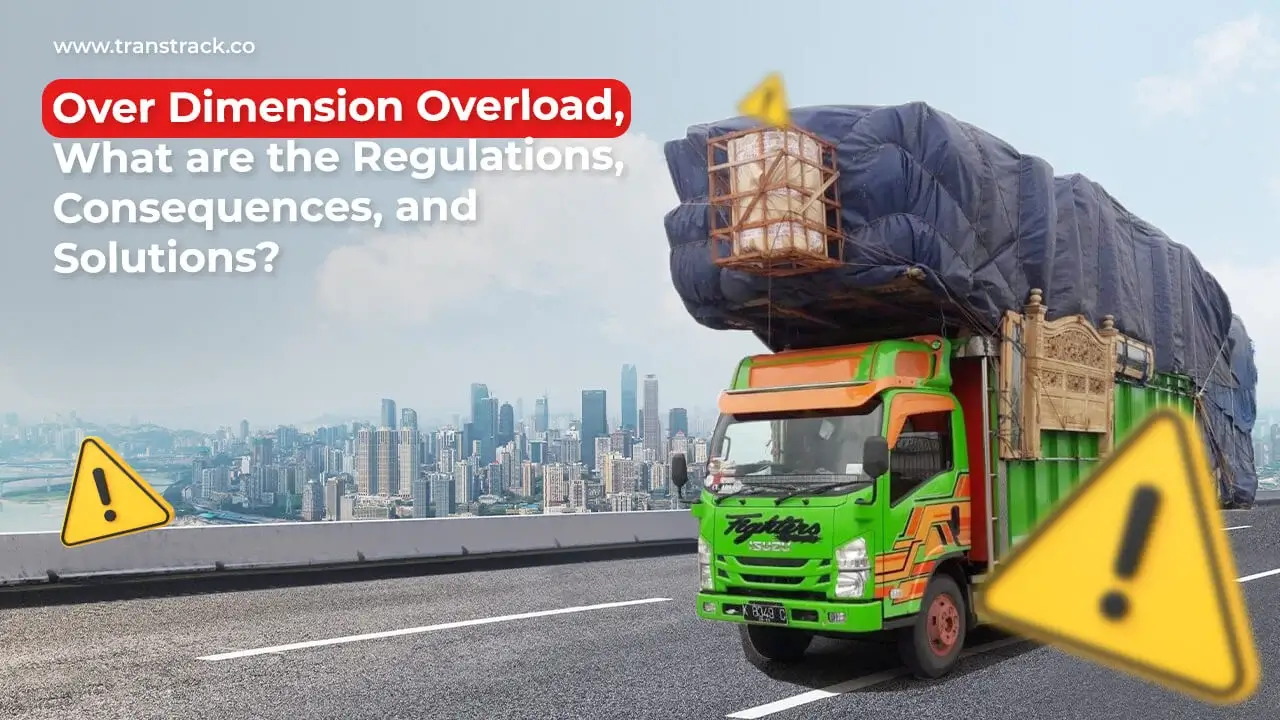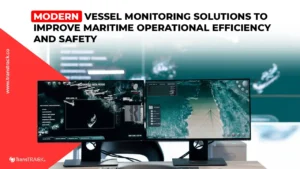Over Dimension Overload, What are the Regulations, Consequences, and Solutions?
Posted on December 18, 2025 by Nur Wachda Mihmidati

Over Dimension Overload is any item that exceeds one or more of the standard legal size criteria for each state and province. While this may vary depending on the jurisdiction, general guidelines for legal parameters are: 53 feet long, 8 feet 6″ wide, and 13 feet 6″ high (on trailer). Height limits will vary, generally speaking in western states and provinces, with the exception of British Columbia, the height limit is 14′. As a general rule, every state east of the Mississippi River will limit cargo height to 13′ 6″.
Cargo that exceeds any of these parameters and is irreducible in size, is considered oversized or over-dimensional and requires a permit prior to shipment. Cargo taller than 16′ enters a new category called “super status”. This requires a different type of clearance and often the pole car needs to clear the route before the delivery begins. Super status deliveries are complex and require a team of experienced drivers. Super status can also vary depending on the state, for example Florida considers heights over 15 feet as super status loads due to the low infrastructure in the state.
In simple terms, ODOL or Over Dimension Overload is an item that protrudes out of the loading deck of the vehicle transporting the cargo. If a truck with a loading platform length of 20 feet is loaded with cargo such as a 22-foot long TMT bar, then the TMT bar qualifies as an Over Dimension Overload. If the same TMT bar is loaded on a vehicle with a platform length of 22+ feet, it will be classified as Normal Cargo rather than ODOL. This definition of ODOL is to prevent the industry from unnecessarily transporting Normal Cargo as ODOL for petty economic gains at the expense of road user safety. As discussed in our other article, “What are the costs associated with ODOL?”, the government imposes fines on the transportation of ODOL, thus encouraging the industry to refrain from taking unnecessary risks and use larger vehicles to transport these loads.
- This definition applies to length and width, but what about height? Cargo that is taller than the vehicle body does not make it dangerous. Hence for height we need to specify a limit to define ODOL. In CMVR (Section 93, Sub Section 2, Page No 68), the Indian government sets the height limit for all mechanized trucks and trailers at 3.8 meters (12.46 feet) from the surface. This means that if you load a load with a height of 8 feet on a vehicle that has a platform height of 5 feet, the load will qualify as ODOL.
- In terms of length and width too, the government has given an upper limit of 12 meters in length for Rigid Trucks, 16 meters in length for articulated vehicles (also called Trailers) and 2.6 meters in width for all vehicles (See CMVR Part 93, Page No 68). The length limit is for the whole vehicle, so the length of the loading deck will be shorter. Considering this upper limit, if your cargo is wider than 2.6 meters, it qualifies as ODOL even if the loading deck exceeds the width of the cargo.
[display-post-read-also]
Over Dimension Regulation in Indonesia
If in Indonesia itself, the government also has regulations regarding this ODOL. These regulations have been regulated in several regulations such as:
- LAW NO. 8 TH. 1981 CONCERNING CRIMINAL PROCEDURE LAW (KUHAP)
- LAW NO. 2 TH. 2002 TTG POLRI
- LAW NO 22/2009 ON ROAD TRAFFIC AND TRANSPORTATION
- REGULATION NO 80/2012 ON THE PROCEDURES FOR CHECKING MOTOR VEHICLES ON THE ROAD AND PROSECUTING VIOLATIONS OF TRAFFIC & ROAD TRANSPORTATION
- SE MENHUB NO 14/2016 TTG TASKS AND AUTHORITIES OF CIVIL SERVANTS IN THE BID TRAFFIC & TRANSPORTATION JLN IN THE DISHUB ENVIRONMENT
- PP NO.74 OF 2014 CONCERNING ROAD TRANSPORTATION
- PP NO. 43 TH. 2010 CONCERNING PROCEDURES FOR IMPLEMENTATION. COORDINATION, WAS & TECHNICAL BIN FOR POLICE, CIVIL SERVANTS & SELF-INITIATED SECURITY FORCES
- PERKAP NO. 20 TH. 2010 ABOUT CORWASBIN SIDIK PPNS
The Minister of Transportation said that, in order to make Indonesia free of overdimension and overloading (ODOL) by 2022, strict action will be taken against cargo companies that violate dimension and load rules.
To prevent overdimension and overloading of trucks moving on toll roads, his office will coordinate with toll road operator Jasa Marga and toll road business entities in monitoring and prosecuting violators.
Punishment If the Vehicle Over Dimension
As for the punishment itself, for violators of the Over Dimension Overload law will be sentenced in accordance with Law No. 22/2009 Article 277, namely, every person who enters Motor Vehicles, trailer trains, and patch trains into the territory of the Republic of Indonesia, makes, assembles, or modifies Motor Vehicles that cause changes in type, trailer trains, patch trains, and special vehicles operated in the country that do not fulfill the type test obligations as referred to in Article 50 paragraph (1) shall be punished with imprisonment for a maximum of 1 (one) year or a maximum fine of Rp24.Article 138 paragraph (3), public transportation and / or goods are only carried out with public motorized vehicles.
Consequences When Vehicles Over Dimension and Overload
The consequences of overloading can paradoxically slow down your deliveries and jeopardize your business, in addition to others. Some of the biggest consequences of vehicle overloading are as follows:
- Less stable vehicles that are difficult to steer and take longer to stop – When the maximum weight of the vehicle is exceeded, the vehicle reacts differently because it was not designed to carry a larger load. The result of an overloaded vehicle can be fatal.
- Great strain on vehicle tires – Overloading puts great stress on tires which can lead to overheating and rapid wear, increasing the likelihood of premature, costly, and dangerous failures such as tire blowouts.
- Insurance coverage void if the vehicle is involved in an accident – Since overloading vehicles is illegal, your insurance coverage may be voided if your overloaded vehicle is involved in an accident.
- Excessive wear and tear on roads, sidewalks and bridges – Such road damage is repaired using taxpayers’ money.
- Increased fuel consumption – Carrying extra-large loads increases the cost of travel, potentially making your business’ shipping costs more expensive than with the appropriate load size.
How does ODOL affect driver safety?
ODOL (Over Dimension and Over Loading) has a serious impact on the safety of drivers, vehicles, and other road users. Here is an explanation of how ODOL affects driver safety:
1. Higher Risk of Accident
ODOL makes vehicles difficult to control, especially when cornering, climbing, or descending. Overloading can make the vehicle:
- Easier to roll over
- Has a longer braking distance
- Difficult to stop suddenly in an emergency
2. Vehicle System Failure
Overloading can accelerate damage to:
- Braking system (brakes heat up quickly and become unresponsive)
- Suspension and wheels
- Vehicle frame and chassis
These can all lead to technical failures while driving, putting the driver at risk.
3. Driver Fatigue
Driving an ODOL vehicle requires extra effort and concentration. Drivers must constantly maintain vehicle balance and be alert to potential mechanical failures. This increases the risk of fatigue and stress, which are major contributing factors to accidents.
4. Difficulty in Emergency Control
In urgent situations (such as avoiding other vehicles or sudden braking), ODOL vehicles are much more difficult to control than vehicles with normal loads.
5. Impact on Roads and the Environment
ODOL damages roads faster. Damaged roads increase the risk of accidents, especially for heavy vehicles that are already unstable.
ODOL not only violates the law, but also threatens the lives of drivers and others on the road. The implementation of proper load management and monitoring systems such as those offered by TransTRACK is crucial to improving safety and operational efficiency.
Causes of ODOL in the Logistics Industry
The rise of Over Dimension and Over Loading (ODOL) practices in the logistics industry is not without reason. Many industry players are trapped in operational patterns that put short-term efficiency above safety and legal compliance. Here are some of the main causes of ODOL that need attention:
1. Price Competition
- The logistics industry is highly competitive, especially when it comes to shipping rates.
- To reduce costs, many companies choose to transport goods beyond vehicle capacity in order to reduce the number of trips.
- This practice lowers the logistics cost per trip, but increases the risk of vehicle damage and road accidents.
2. Lack of Supervision
- Supervision at control points such as weighbridges, ports, or logistics terminals has not been maximized.
- Loopholes such as evasion of scales or manipulation of load data are still found.
- Weak law enforcement has made ODOL violations an acceptable habit.
3. Low Driver and Industry Awareness
- Many drivers and vehicle owners do not fully understand the technical and legal impacts of overloading.
- Lack of training and education means ODOL is considered a “normal practice”.
- In fact, ODOL can cause vehicle damage, driver fatigue, and high risk of accidents.
Solution to Avoid Over Dimension and Overload
Over dimension overload is a very disturbing thing for other drivers or yourself because you can be sentenced to criminal charges. But how can drivers know that their fleet is over dimension and overloaded? Knowing that the goods do not fit in the fleet is not enough. Because usually even though the goods still fit, the vehicle is still not strong enough to withstand the weight that is accommodated.
To find out, you can use the Over Dimension Sensor feature from TransTRACK. This feature will help drivers to know whether the goods they are loading fit, are still lacking, or are excessive.
Start using Fleet Management System from TransTRACK products and enjoy other features for your safety and security in driving!

FAQ Over Dimension Overload
What is ODOL?
Over Dimension Over Load (ODOL) refers to freight vehicles that exceed the permitted size and weight limits. This condition can endanger safety, damage infrastructure, and disrupt the smooth flow of transportation.
How can you tell if a vehicle is overloaded?
Vehicles are categorized as ODOL if their dimensions or load weight exceed regulatory limits. Measurements are taken before departure using official weighing and measuring equipment.
What are the risks of ODOL vehicles?
Unlicensed ODOL vehicles risk causing accidents, damaging roads or bridges, incurring legal penalties, and incurring additional costs due to delays or special routes.
How do I obtain an ODOL permit?
ODOL permits are obtained through the relevant authorities with documents that include vehicle dimensions, load weight, route plans, and delivery schedules. These permits ensure legal and safe deliveries.
Can all routes be accessed by ODOL vehicles?
Not all routes are passable. Routes must comply with permits and take into account road and bridge conditions, as well as road user safety.
How does TransTRACK help ODOL deliveries?
TransTRACK monitors ODOL vehicles in real time, ensuring routes comply with permits, facilitating coordination, and making deliveries safer and more efficient.
Recent Post
Topic :
 Bahasa Indonesia
Bahasa Indonesia









